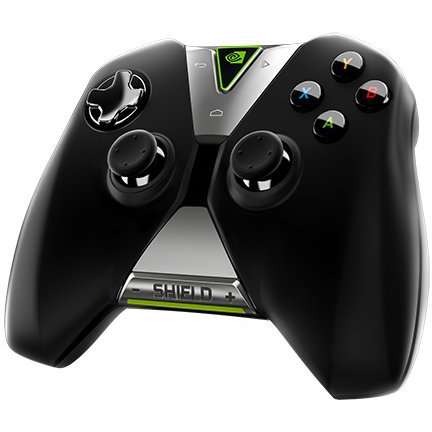Nvidia Shield Tablet And Shield Controller Review
The Shield Tablet, powered by Nvidia’s Tegra K1 SoC, deftly handles browsing and media playback duties. Combining it with the wireless Shield Controller transforms the 8-inch device into an exciting mobile gaming platform.
Grid, ShadowPlay And Twitch
Nvidia Grid
GameStream plus the cloud equals Nvidia Grid. Rather than using a local PC for rendering, Nvidia’s servers handle the pixel wizardry and stream H.264 video over the Internet to a Shield portable device running the Nvidia Grid app, available for free from the Play Store. The service also requires an Internet connection with at least a 10Mb/s download speed and 40ms ping times to the Grid servers.
Nvidia Grid is currently in beta with game servers singly located in San Jose, CA, which may degrade the experience for those outside the western U.S. For gamers who aren’t geographically challenged, the service is free during the beta phase. As of now, there are 18 titles available. Check out the Nvidia Grid Cloud Gaming Beta page for more information.
I played some of the games at different times spread over a couple of weeks. Living in close proximity to California and with a connection rated for 50Mb/s down and 10Mb/s up, I found the Grid gaming experience to be generally excellent. The video was smooth and there wasn’t any conceivable input lag, myself being about average in lag sensitivity. Only a single gaming session was marred by lagging inputs.
I see a bright future for Nvidia Grid and other similar cloud gaming services, freeing us from the tedium of downloading, installing and updating games; no more license keys or intrusive DRM. Nvidia will need more game servers to expand Grid’s reach and more games to broaden its appeal, but the potential is obvious.
ShadowPlay And Twitch
The Shield Tablet includes Nvidia’s ShadowPlay screen recording technology. Like the desktop version, ShadowPlay on the tablet directly accesses the frame buffer at a low level and then passes the frames to the NVEnc hardware H.264 video encoder. In addition to capturing a video of the screen, regardless of what app or game is in use, buttons along the top of the Nvidia Share menu individually toggle options to record audio from the microphone, overlay video from the front facing camera or even overlay a chat window. The size, location and opacity of the chat and front camera video overlays are adjustable.
There are two different options for video recording. Manual Record allows precise control of when to start and stop recording. The Auto Record mode, once it starts, continuously records video into a fixed length rolling buffer like a DVR, which works well for capturing your prowess while gaming. It also keeps videos from consuming too much valuable storage space. The buffer is user configurable for durations of 1, 3, 5, 10 or 20 minutes. There are also four different quality settings for capturing video: low (360p, 25FPS), medium (480p, 30FPS), high (720p, 30FPS), and ultra (1080p, 30FPS). All four modes use a variable bit rate.
ShadowPlay also enables the Shield Tablet to broadcast live gaming sessions, complete with your eloquent commentary from the integrated microphone and video overlay of your noble face from the front camera, directly to Twitch.
Get Tom's Hardware's best news and in-depth reviews, straight to your inbox.
-
blubbey Those GPGPU benchmarks are ridiculous in comparison. It looks like a great bit of kit from what I've seen so far. A die shrunk Maxwell should be fantastic. Maybe even a lower clocked version just for power consumption? It'll still perform as well, if not better than the K1 at 750MHz (assuming 2 SMMs) I'd assume.Reply -
Memnarchon "Based on these results, Tegra K1 must be “a neural net processor; a learning computer” sent back through time to destroy all of the other SoCs that could lead a rebellion in the post-apocalyptic future."Reply
Lol this is epic! xD
Anyway, great and unique review. Especially for the so many GPGPU benchmarks.
Nvidia tablet at $299 seems to be a great buy. -
aberkae If maxwell brings double the performance per watt on the same node the next tegra chip on 20 nm node should be a home run for the companyReply -
deftonian Impressive, but I feel it's still missing that "umph" to get me to buy this and carry it around as an added device, next to my phone (Note 3). Maybe I just don't game enough on the android market or steam. Either way, I think it is impressive for a mobile gaming device and all the things it offers. I think they've started a great line and hope it grows into a successful tablet/gaming brand.Reply -
aberkae If maxwell brings double the performance per watt on the same node the next tegra chip on 20 nm node should be a home run for the companyReply -
gio2vanni86 The streaming a game while i'm at my friends house using my PC at home is what has me very interested. Plug into his TV and play amazing games he can only dream of. I'm in.Reply -
vithrell Just wait for Intel's Core M. It wont match the price (CPU alone will cost $300), but in fanless tablet form factor it wont have worthy competitor. Early GPU benchmarks give Core M 55k graphics score in Ice Storm, so more than 1.5x more power than Tegra K1. AND you can run full Windows on it. I wish Nvidia took x86 path with its cpu cores.Reply



